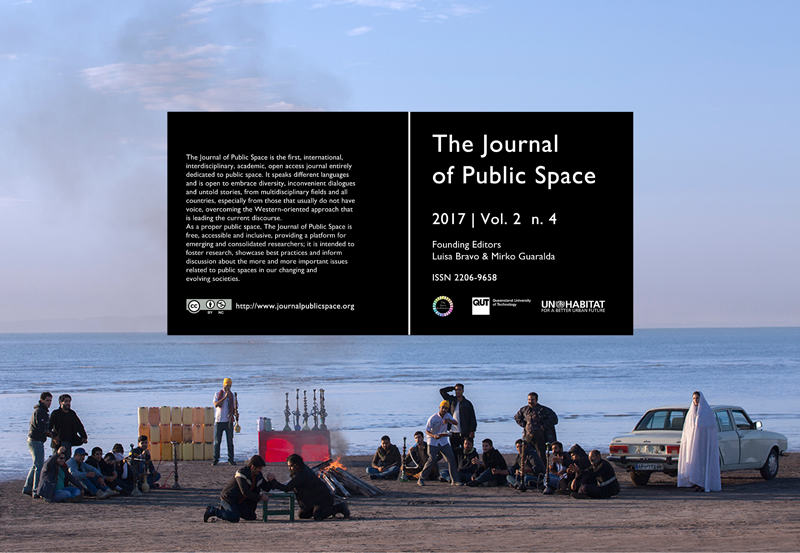Placemaking, livability and public spaces. Achieving sustainability through happy places
##plugins.themes.bootstrap3.article.main##
Abstract
Livability of places is set by many factors which are in turn influenced by a variety of elements - both tangible and intangible - concerning the area in question and its surroundings. One of these factors is constituted by urban happiness, which, together with the term sustainability meant in its wide meaning, constitutes a key concept in placemaking. In this respect, a new attention to urban happiness has been given but often in terms of theoretical sense or from an observational point of view. Aim of this study is to present the Happy place mapping, a method of analysis specifically devoted to the identification of factors that influence the perception of happiness from the urban point of view. To illustrate the method, the emblematic HafenCity case study carried out in Hamburg is showed. A long process of urban regeneration is interesting this area and the new public spaces are changing the identity of the city, making it more livable and agreeable both for locals and visitors. The discussion on questions related to methods that concern intangible aspects and on Happy place mapping conclude the paper.
##plugins.themes.bootstrap3.article.details##
The Authors retain copyright for articles published in The Journal of Public Space, with first publication rights granted to the journal.
Articles in this journal are published under the Creative Commons Attribution NonCommercial Licence (CC-BY-NC) - https://creativecommons.org/licenses/by-nc/4.0/.
You are free to:
• Share - copy and redistribute the material in any medium or format
• Adapt - remix, transform, and build upon the material
Under the following terms:
• Attribution - You must give appropriate credit, provide a link to the license, and indicate if changes were made. You may do so in any reasonable manner, but not in any way that suggests the licensor endorses you or your use.
• NonCommercial — You may not use the material for commercial purposes.
References
Appleyard, D. (1981). Livable Streets. Berkeley: University of California Press.
Ballas, D. (2013). What makes a ‘happy city’? Cities 32, 539–550.
Burns, G. W. (2005). Naturally happy, naturally healthy: The role of natural environment in well-being. In F. A. Huppert, N. Baylis, and B. Keverne eds. The science of well-being. New York: Oxford University Press.
Burton, L. (2015). Mental well-being. In H. Barton, S. Thompson, S. Burgess, and M. Grant (Eds) The Routledge Handbook for Health and Well-Being. London: Routledge.
Crappsley, R. (2017). Designing Streets for Good Health: Now and in the Future, Urban Design Group Journal, 143, 10–11.
Carmona, M., Heath, T., Oc, T., and Tiesdell, S. (2010). Public places-Urban spaces. Oxford: Architectural Press.
Evans, B., McDonald, F., and Rudlin, D. (2011). Urban Identity. Learning from Place. London, New York: Routledge.
Florida, R., Mellander C., and Rentfrow, P.J. (2013). The happiness of Cities, Regional Studies, 47, 613–627.
Friedmann, J. (2010). Place and Place-Making in Cities: A Global Perspective, Planning Theory & Practice, 11 (2) 149–165.
Gehl, J. (2010). Cities For people. Washington: Island Press.
Kyttä, M. et al. (2015). Urban happiness: context-sensitive study of the social sustainability of urban settings, Environment and Planning B, 43(1), 34–57.
Lynch, K. (1960). The Image of the city. Cambridge: MIT Press.
Madanipour, A. (2003). Public and Private Spaces of the City. London, New York: Routledge.
McCay, L. (2017). Designing Mental Health into Cities, Urban Design Group Journal, 142, 25–27.
Montgomery, J. (1998). Making a City: Urbanity, Vitality and urban Design, Journal of Urban Design, 3, 93–116.
Montgomery, C. (2013). Happy City. London: Penguin.
Porteous, J. D. (1977). Environmental and behavior: planning and everyday urban life. Reading, Massachusetts: Addison-Wesley.
Project for Public Spaces (2001) How to Turn a Place Around: A Handbook for Creating Successful Public Spaces. Project for Public Places, New York City, NY.
Relph, E. (1976). Place and Placelessness. London: Pion.
Saunders, L. (2017). Healthy Streets, Urban Design Group Journal, 142, 35–36.
Sepe, M. (2013). Planning and Place in the City. Mapping Place Identity, London, New York: Routledge.
Sepe, M. (2013). Urban history and cultural resources in urban regeneration: a case of creative waterfront renewal, Planning perspective, 28 (4), 595-613.
Sepe, M. (2014). Urban transformation, socio-economic regeneration and participation: Two cases of creative urban regeneration, International Journal of Urban Sustainable Development, 6 (1), 20-41.
Sepe, M. (2015). Improving Sustainable Enhancement of Cultural Heritage: Smart Placemaking for Experiential Paths in Pompeii, International Journal of Sustainable Development and Planning, 10, (5) 713–733.
Sepe, M. (2017). The Role Of Public Space To Achieve Urban Happiness, International Journal of Sustainable Development and Planning, 2 (4) 724–733.
Taylor, A. F., Kuo, F. E., Sullivan, W. C. (1998). Growing up in the inner city: Green spaces as places to grow, Environmental Behavior 30 (1) 3–27.
Wang, D., and Shenjing, H. (eds.) (2016). Mobility, Sociability and Well-Being of Urban Living, Heidelberg: Springer.
Whyte, W.H. (1980) The social Life of small public space, Conservation Foundation: Washington DC, 1980.
Zelinka, A., and Brennan, D. (2001). Safescape, Creating Safer, More Livable Communities Though Planning and Design. Chicago: Planner Press APA.
Zidansek, A. (2007). Sustainable development and happiness in nations, Energy, 32, 891–897.

